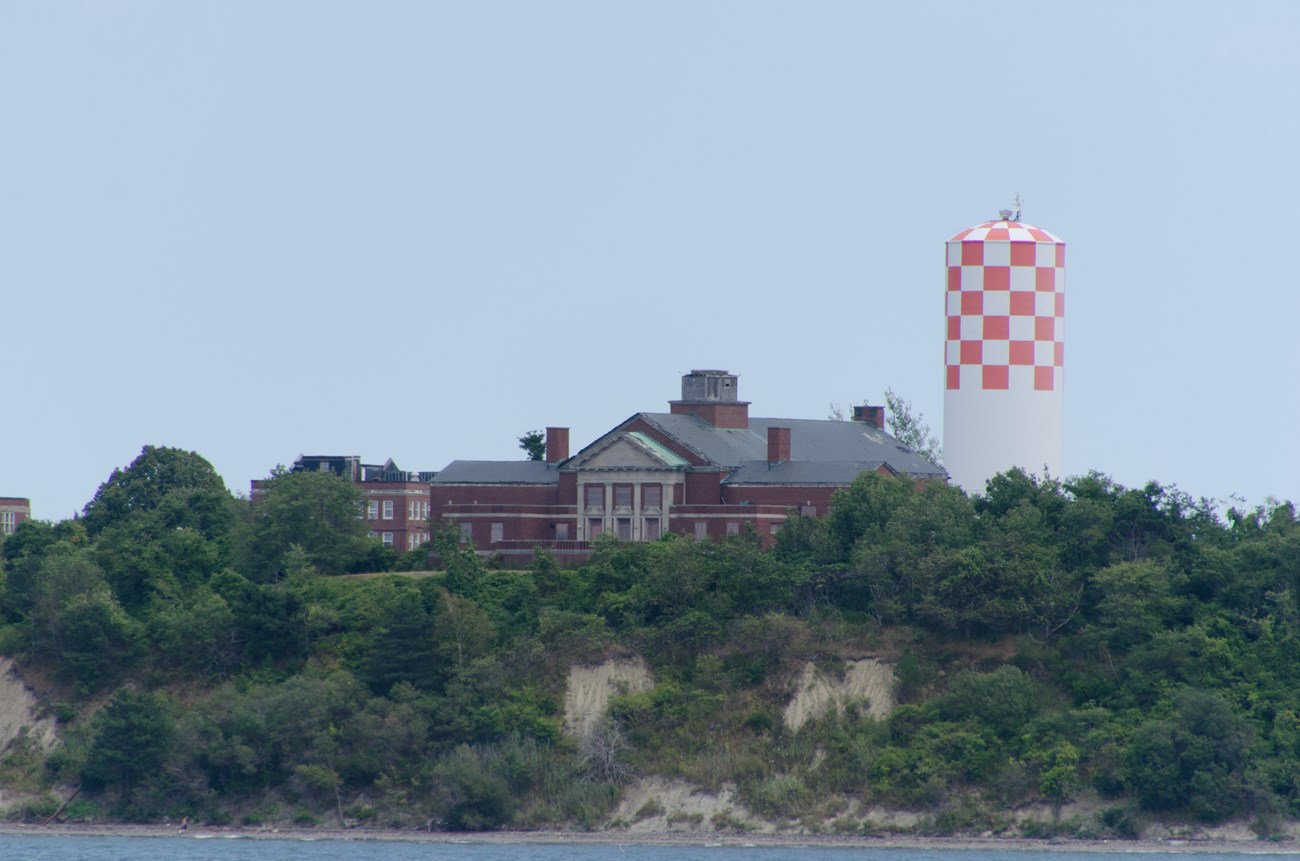
NPS Photo/ Jobe This large island is home to Long Island Head Light and the now closed City of Boston social services facilities. As the largest island in Boston Harbor, Long Island boasts a shoreline that extends one mile. Due to its size, Long Island has hosted numerous structures and holds a varied history. General InformationThis island of Boston Harbor Islands National and State Park is managed by City of Boston. Visitor Facilities & ServicesPublic access to Long Island is restricted.
Short HistoryPrior to European settler colonization, Indigenous peoples likely accessed the island seasonally. During colonization, the island was granted to Boston then leased and later sold to tenant farmers. During Metacom's Rebellion/King Philip's War, incarcerated Christianized Indigenous peoples were relocated from the internment camp at Deer Island to another camp at Long Island. During the American Revolution, colonial soldiers constructed defensive batteries and a skirmish ensued. A rudimentary lighthouse was built on the head in 1794 followed by a more prominent tower in 1819. The light was later moved to accommodate coastal fortifications. Military use resumed during the Civil War, when the island was a conscript camp and an extensive armament was installed. Defenses were modernized in the early Endicott Period, but were never used. In the midnineteenth century a resort was situated in the center of the island while a Portuguese fishing community grew along the shore. In 1882, the City of Boston took the island for institutional care facilities: first an almshouse, later a home for unwed mothers, a chronic disease hospital, nursing school and institutional farm, and now for more than a dozen social service programs. Natural History OverviewVegetationLong Island contains an abundance of cultivated and naturalized plant species that merit a more detailed study as part of a Cultural Landscape Report for the island. The oldest trees are located within the Long Island Campus including shade trees and remnants of an apple orchard. There are also many ornamental shrubs and perennials. Long Island Head was devoid of woody vegetation until the closure of Fort Strong and is now undergoing rapid succession with species such as sumac and poplar. The East Head of the island contains an extensive grove of pine, most likely planted by the Civilian Conservation Corps in the 1930s. The freshwater wetland on the southwest side of the island is likely to contain a diversity of plant species. A community garden within the Long Island Campus and the nursery for the Friends of the Boston Harbor Islands Revegetation Project also contribute to the botanical diversity on the island. WildlifePlease see Animals page for more information. GeologyThe island is composed of three drumlins, reaching an elevation of 95 feet. The northeastern point is known as Long Island Head, the southwestern end as West Head, and a small point on the southeastern side as Bass Point. A fresh water marsh is located on the west side of island between Bass Point and West Head. Extensive tidal flats surround the island. Water FeaturesAn enormous water tower on the central drumlin in the Long Island Campus supplies water and water pressure for hydrants. The checkered red and white pattern on the tower is used by the FAA for navigation into Logan Airport. The location of Fort Strong water systems requires further research. Views and VistasGeographically situated in the center of the harbor, Long Island with its checkered water tower, bridge and lighthouse are visible from many points. Conversely the island offers excellent views of most of the islands in the middle and outer harbor. Structures
|
Last updated: November 30, 2023
